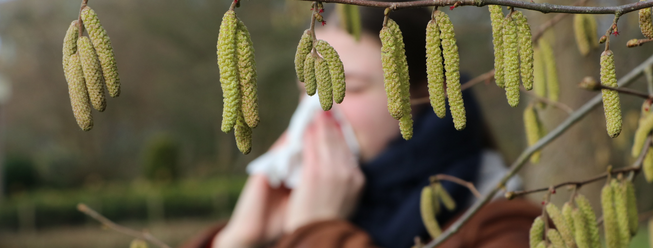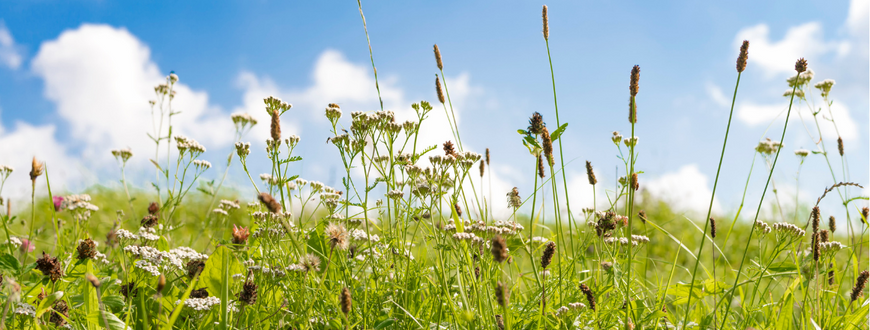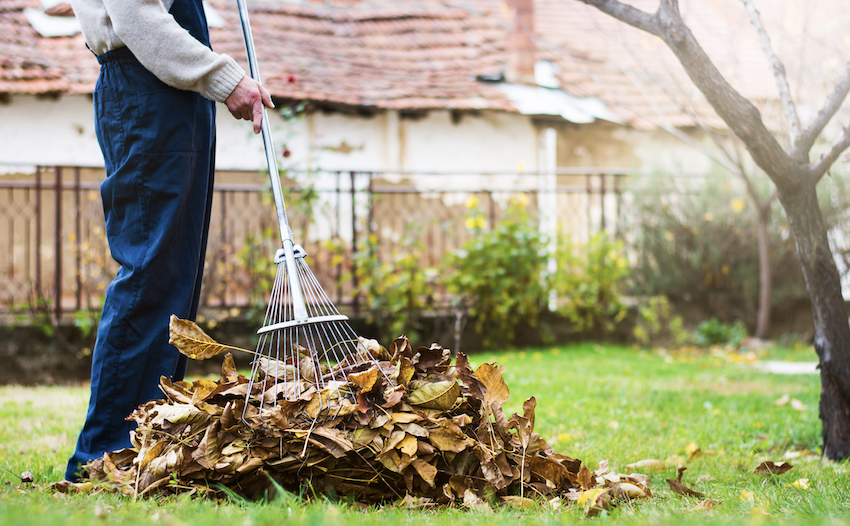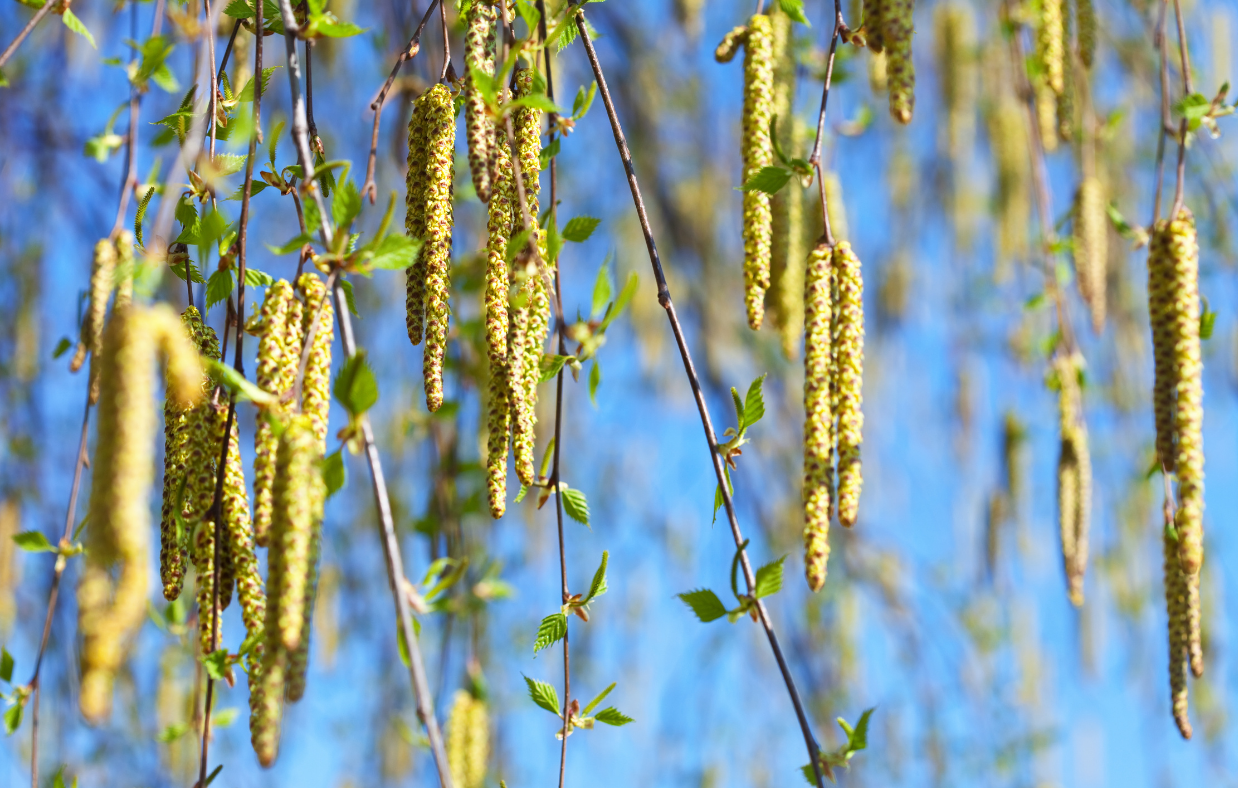Top tips for reducing exposure to tree pollen:
Monitor pollen forecasts daily and if possible, stay indoors on high pollen days. Rain washes pollen from the air, so pollen counts should be lower on cooler, wet days. It’s also important to be cautious of thunderstorms, especially when the pollen counts are high. If you live with hay fever and asthma, these weather conditions can cause even mild symptoms to become severe. So, it is essential to be prepared and take your allergy treatments and medications regularly to control symptoms. If symptoms are worsening, seek medical advice.
If it is not possible to remain indoors during high pollen days, then the following will help to reduce your exposure:
- Wear a mask, wraparound sunglasses and a hat with a large peak or brim when outdoors to keep pollen allergens out of your eyes, face, and hair.
- If you have been outdoors for prolonged periods, shower, wash your hair and change your clothing, especially before bed. As pollen is virtually indestructible unless wet, it will stay on hair, body and clothing, acting as a constant source of allergen triggering hayfever symptoms.
- Avoid outdoor activities that expose you to pollen, such as mowing lawns or raking leaves.
- Keep windows closed at home and in the car. Most importantly, in the early morning and evening, when the pollen count is higher.
- Avoid drying clothes/ linen outside, as pollen can be brought inside on the clothes.
- Wipe pets’ coats with a damp microfiber cloth to remove pollen when they have been out.
What treatment is right for you?
To help you identify the right treatment for you during the hay fever season, here are the most common options available:
Antihistamines
Antihistamines are the first line of treatment for hay fever and can reduce the symptoms of runny nose and itch, especially in the nose, throat, and eyes. It is recommended to use a long-acting, non-sedating antihistamine, available in both tablet and syrup form. If you need expert advice on the most suitable choice for you or your child’s needs, then speak to a pharmacist or your GP.
Tip: Start treatment early (up to two weeks before symptoms usually start for the best result).
Nasal spray
Nasal steroid sprays help to reduce inflammation associated with the ‘stuffy nose’ feeling of hay fever and may also help to reduce allergic eye symptoms. It is important to take your nasal spray correctly to get the most from your medication.
How to apply your nasal spray
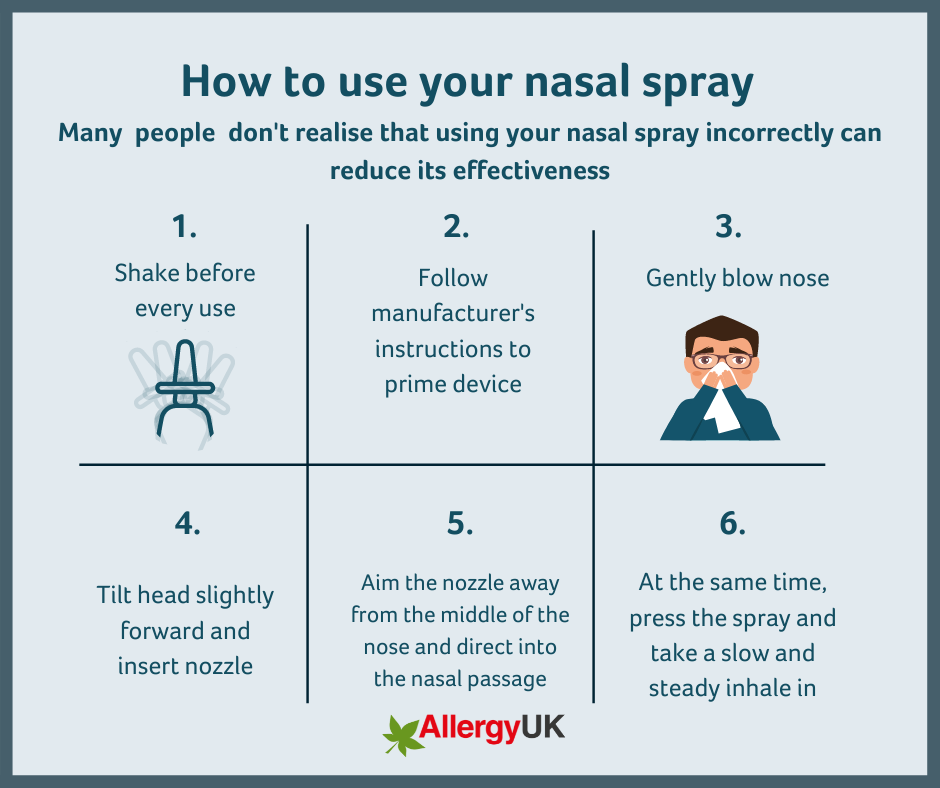
Eye drops
Saline eye drops can help to control the symptoms of hay fever which cause eyes to itch, be watery, red, and irritable. Antihistamine or mast cell stabiliser eye drops are also available for more troublesome eye symptoms.
Non-drug treatments
Saline nasal sprays and irrigation can help soothe inflammation in the nose and clear the nasal passage of any impurities and allergens.
Nasal allergen barrier balms are applied to the rim of the nostril and help catch any pollen/allergens before they get into your nasal passages and trigger allergy symptoms.
These products may help make life more comfortable for people living with hay fever.
What to do if your hay fever treatment is not working?
Please seek advice from a healthcare professional such as your local pharmacist, GP or practice nurse:
- If your symptoms do not improve when taking a daily antihistamine and/or other allergy medications, e.g., nasal spray.
- If your symptoms last more than two weeks and affect you carrying out everyday tasks.
Don’t suffer in silence; many treatments are available to help manage hay fever symptoms.

 Helpline
Helpline